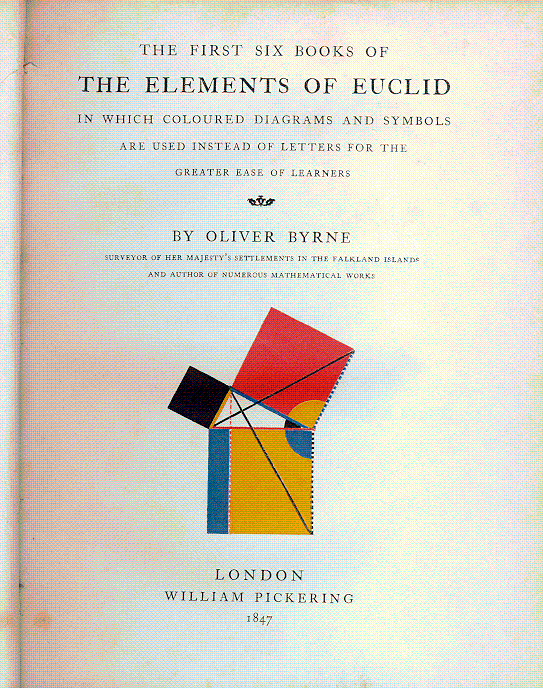
[ Main Euclid page ]


With the financial support of several undergraduate organizations at UBC - the Alma Mater Society of UBC, the Science Undergraduate Society at UBC, and the Undergraduate Mathematics Club - and the cooperation of the Special Collection Division of the UBC Library, we have had the entire edition photographed by Greg Morton at UBC Biomedical Communications We hope to mount eventually on this site digital images of all of the photographs. We imagine that it will serve as an interesting resource for geometry projects all over the world.
We have mounted all of Byrne's book, but in the organization of the site is by no means final. We are still experimenting with the images to improve their quality, and sooner or later the structure found for Book VI, which is much better than the rest, will be transported to the other books. If you have any suggestions we'll be pleased to hear from you.
We wish to thank Brenda Peterson and her staff in the UBC Special Collections for their help and encouragement.
McLean calls Byrne's book one of the oddest and most beautiful books of the century. It was one of a very small number of British books displayed at the Great Exhibition of 1851 (no surprise, perhaps, since Whittingham was on one of the Juries of the exhibition). McLean goes on to say The result is a decided complication of Euclid, but a triumph for Charles Whittingham. Unfortunately, it is quite likely that the cost of publishing Byrne's book was a major cause of the firm's bankruptcy in 1853. More than 75% of the stock were still on hand.
Whether or not Byrne's efforts complicate or simplify Euclid is an interesting and debatable point. Parts of Byrne's attempt to design `colour-coded' mathematical proofs are more successful than others, but it is our hope that even the less successful parts can serve as themes for discussion if not models for imitation. The title page of Byrne's edition, at any rate, illustrates the basic concept of the book rather nicely with a single figure illustrating Euclid's Proposition 47 (Pythagoras' Theorem).
The copy from which this image was taken is in the Colbeck collection of the Library of the University of British Columbia. It was purchased in auction in 1974 for about $300. Byrne's edition became well known recently when extracts from it were included and discussed in the second of Edward Tufte's books on graphical design. A copy of Byrne's book was auctioned in November, 1996 for US $3220.
One might add, Donc Dieu existe! In the bibliography linked to below this is called a satire, but De Morgan doesn't seem to know it. Who was fooling whom?
Byrne is also the author of a book Dual arithmetic also reviewed in A Budget of Paradoxes. The proposal is to replace the usual decimal notation ...
De Morgan's editor, the American historian of mathematics David Eugene Smith, doesn't like the idea of Byrne's edition of Euclid, either, but unfortunately we do not have De Morgan's opinion of it.